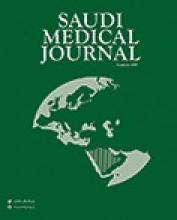Abstract
OBJECTIVES: To evaluate the seasonal variations in the incidence of congenital hypothyroidism (CH) in the screening program of CH in Isfahan, Iran.
METHODS: In this study, we compiled the data obtained retrospectively from CH screening results of 113282 neonates from 17 maternity hospitals in Isfahan, Iran from June 2002 to December 2005. The seasonal variation in the incidence of CH, as well as its monthly incidence was analyzed using all the diagnosed cases of CH.
RESULTS: From the 113282 neonates referred for CH screening, 358 neonates were diagnosed with CH, showing an overall incidence of 3.1/1000 live birth. There was no significant difference in the seasonal variation of CH (p=0.5). According to the monthly distribution analysis, the incidence of CH was higher in the second month of summer (Mordad) and lower in the last month of autumn (Azar)(p=0.04).
CONCLUSIONS: The high incidence of CH in Mordad, the second month of summer, supports the hypothesis that certain environmental factors such as intrauterine viral infections (which commonly exhibit seasonal variations in incidence), exposure to chemical compounds, differences in climate and so forth, may play a role in the etiology of this disorder. Awareness of the monthly distribution of CH incidence could help us identify associated environmental factors and aid in the development of preventative strategies. Further, it would for the appropriate allocation of resources within the screening programs.
- Copyright: © Saudi Medical Journal
This is an open-access article distributed under the terms of the Creative Commons Attribution-Noncommercial-Share Alike 3.0 Unported, which permits unrestricted use, distribution, and reproduction in any medium, provided the original work is properly cited.






